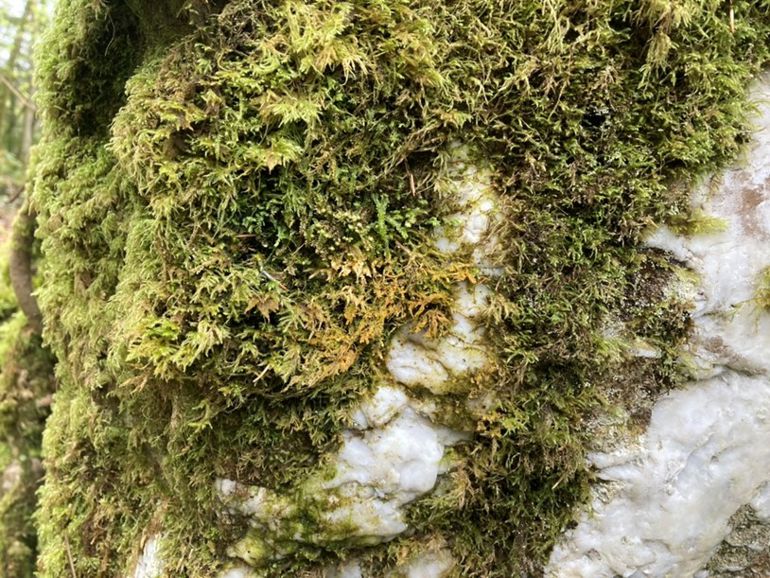Species boosted by habitat work in beauty spot

An extremely rare lichen has been found in the UK for only the second time as species numbers have almost doubled at a biodiverse Eryri beauty spot.
Work at Fairy Glen Site of Special Scientific Interest (SSSI) near Conwy Falls is helping to protect wildlife and plants by controlling non-native invasive plant species.
A recent survey commissioned by Natural Resources Wales (NRW) brought the total number of lichen species at the site to 209, with 94 classed as ‘nationally scarce’, almost doubling the number previously recorded.
This includes an extremely rare southern oceanic species of lichen called Porina atlantica which has only been previously found on old oaks, and very occasionally rocks, in ancient woodland in the south-west of Ireland and one other site in North Wales, Ceunant Llennyrch.
Over the past 12 months rhododendron, cherry laurel, yellow azalea, and western hemlock have started to be removed from the site as they threaten native tree species providing shelter and food for breeding birds like redstart and wood warbler and bats including lesser horseshoe and brown long-eared.
The work was commissioned by NRW in partnership with the National Trust Cymru and Eryri National Park Authority and is funded by the Welsh Government’s Nature Network Fund to strengthen the environmental resilience of Wales’s protected land.
Rob Booth, Biodiversity Restoration Officer for NRW, said:
“Fairy Glen and Conwy Falls have been an enduring attraction for visitors for more than 200 years.
“Control and removal of non-native invasive species reduces shading and competition with native species, helping the gorge provide ideal conditions for mosses, lichen, and ferns, which grow on boulders in the river, on trees and exposed rocky outcrops in the woodland.
“This latest survey has shown the importance of this work and guided how we go about it. It’s fantastic to see so many species thrive in this environment.
“As well as birds, bats, rare mosses and plants, Fairy Glen SSSI is home to a wide range of wildlife such as otters, badgers, wood ant colonies, salmon and the scarce alder leaf beetle and pearl-bordered fritillary butterfly.
"By gradually and sensitively removing non-native invasive plant species, we are ensuring rare mosses, as well as other wildlife and plants, found in the gorge are not adversely affected.”
This autumn and winter small-scale halo-felling of conifers and beech around key veteran oak trees identified in the survey will take place to help lichen which require sunlight to survive and spread.
Work will also continue to control and remove invasive non-native species.
Footpaths will remain open, but visitors are asked follow guidance on signage in place during the works.
You can find out more about by watching S4C’s ‘Garddio a Mwy’ which aired recently and is available on BBC iPlayer (starting at 3 mins 49 secs) with subtitles available.
